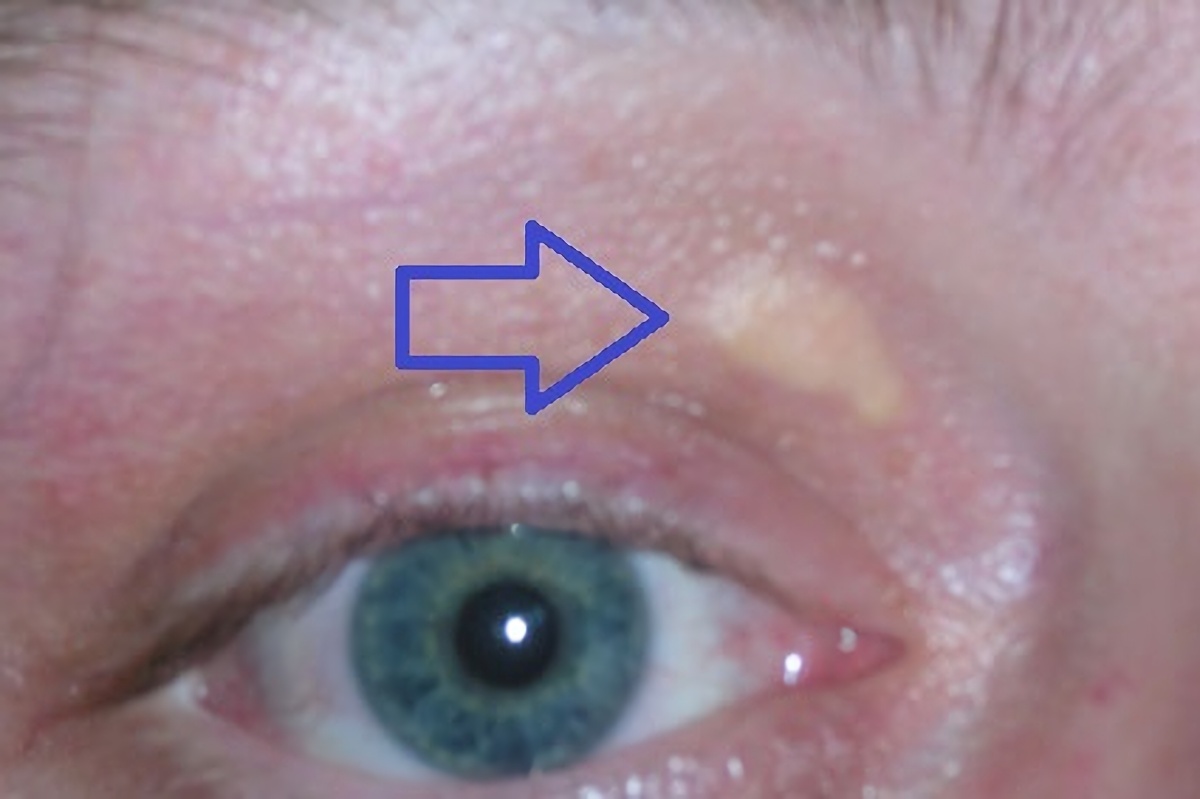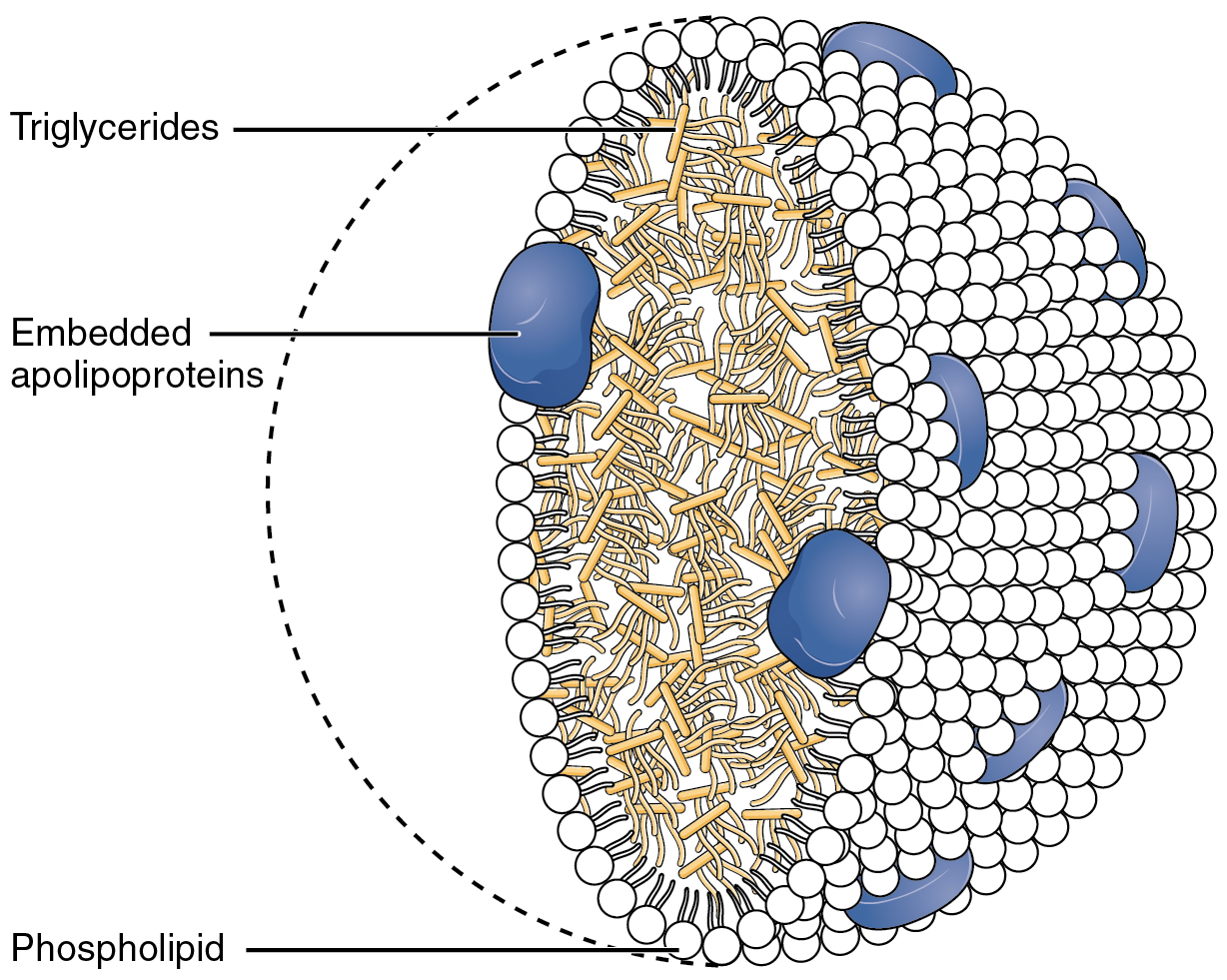|
Familial Dysbetalipoproteinemia
Familial dysbetalipoproteinemia or type III hyperlipoproteinemia is a condition characterized by increased total cholesterol and triglyceride levels, and decreased HDL levels. Signs and symptoms Signs of familial dysbetaproteinemia include xanthoma striatum palmare (orange or yellow discoloration of the palms) and tuberoeruptive xanthomas over the elbows and knees. The disease leads to premature atherosclerosis and therefore a possible early onset of coronary artery disease and peripheral vascular disease leading to a heart attack, i.e. myocardial infarction, chest pain on exercise, i.e. angina pectoris or stroke in young adults or middle aged patients. Causes This condition is more likely when a mutation in apolipoprotein E (ApoE) is present. ApoE serves as a ligand for the liver receptor for chylomicrons, IDL and VLDL, also known as very-low-density-lipoprotein receptor. Individuals with two copies of the ApoE2 gene have substantially elevated risk of this condition. ... [...More Info...] [...Related Items...] OR: [Wikipedia] [Google] [Baidu] |
Triglyceride
A triglyceride (from '' tri-'' and '' glyceride''; also TG, triacylglycerol, TAG, or triacylglyceride) is an ester derived from glycerol and three fatty acids. Triglycerides are the main constituents of body fat in humans and other vertebrates as well as vegetable fat. They are also present in the blood to enable the bidirectional transference of adipose fat and blood glucose from the liver and are a major component of human skin oils. Many types of triglycerides exist. One specific classification focuses on saturated and unsaturated types. Saturated fats have ''no'' C=C groups; unsaturated fats feature one or more C=C groups. Unsaturated fats tend to have a lower melting point than saturated analogues; as a result, they are often liquid at room temperature. Chemical structure The three fatty acids substituents can be the same, but they are usually different. The positions of the three fatty acids are specified using stereospecific numbering as sn-1, sn-2, and sn- ... [...More Info...] [...Related Items...] OR: [Wikipedia] [Google] [Baidu] |
Liver
The liver is a major metabolic organ (anatomy), organ exclusively found in vertebrates, which performs many essential biological Function (biology), functions such as detoxification of the organism, and the Protein biosynthesis, synthesis of various proteins and various other Biochemistry, biochemicals necessary for digestion and growth. In humans, it is located in the quadrants and regions of abdomen, right upper quadrant of the abdomen, below the thoracic diaphragm, diaphragm and mostly shielded by the lower right rib cage. Its other metabolic roles include carbohydrate metabolism, the production of a number of hormones, conversion and storage of nutrients such as glucose and glycogen, and the decomposition of red blood cells. Anatomical and medical terminology often use the prefix List of medical roots, suffixes and prefixes#H, ''hepat-'' from ἡπατο-, from the Greek language, Greek word for liver, such as hepatology, and hepatitis The liver is also an accessory digestive ... [...More Info...] [...Related Items...] OR: [Wikipedia] [Google] [Baidu] |
List Of Cutaneous Conditions
Many skin conditions affect the human integumentary system—the organ system covering the entire surface of the Human body, body and composed of Human skin, skin, hair, Nail (anatomy), nails, and related muscle and glands. The major function of this system is as a barrier against the external environment. The skin weighs an average of four kilograms, covers an area of two square metres, and is made of three distinct layers: the epidermis (skin), epidermis, dermis, and subcutaneous tissue. The two main types of human skin are: glabrous skin, the hairless skin on the palms and soles (also referred to as the "palmoplantar" surfaces), and hair-bearing skin.Burns, Tony; ''et al''. (2006) ''Rook's Textbook of Dermatology CD-ROM''. Wiley-Blackwell. . Within the latter type, the hairs occur in structures called pilosebaceous units, each with hair follicle, sebaceous gland, and associated arrector pili muscle. Embryology, In the embryo, the epidermis, hair, and glands form from the ectod ... [...More Info...] [...Related Items...] OR: [Wikipedia] [Google] [Baidu] |
Apolipoprotein B Deficiency
Apolipoprotein B deficiency is an autosomal dominant disorder resulting from a missense mutation which reduces the affinity of apoB-100 for the low-density lipoprotein receptor (LDL Receptor). This causes impairments in LDL catabolism, resulting in increased levels of low-density lipoprotein in the blood. The clinical manifestations are similar to diseases produced by mutations of the LDL receptor, such as familial hypercholesterolemia. Treatment may include, niacin or statin or ezetimibe. It is also known as "normotriglyceridemic hypobetalipoproteinemia". See also * Familial hypercholesterolemia Familial hypercholesterolemia (FH) is a genetic disorder characterized by high cholesterol levels, specifically very high levels of low-density lipoprotein cholesterol (LDL cholesterol), in the blood and early cardiovascular diseases. The mos ... References External links Skin conditions resulting from errors in metabolism Lipid metabolism disorders {{Genodermatose ... [...More Info...] [...Related Items...] OR: [Wikipedia] [Google] [Baidu] |
Primary Hyperlipoproteinemia
Hyperlipidemia is abnormally high levels of any or all lipids (e.g. fats, triglycerides, cholesterol, phospholipids) or lipoproteins in the blood. citing: and The term ''hyperlipidemia'' refers to the laboratory finding itself and is also used as an umbrella term covering any of various acquired or genetic disorders that result in that finding. Hyperlipidemia represents a subset of dyslipidemia and a superset of hypercholesterolemia. Hyperlipidemia is usually chronic and requires ongoing medication to control blood lipid levels. Lipids (water-insoluble molecules) are transported in a protein capsule. The size of that capsule, or lipoprotein, determines its density. The lipoprotein density and type of apolipoproteins it contains determines the fate of the particle and its influence on metabolism. Hyperlipidemias are divided into primary and secondary subtypes. Primary hyperlipidemia is usually due to genetic causes (such as a mutation in a receptor protein), while secondary ... [...More Info...] [...Related Items...] OR: [Wikipedia] [Google] [Baidu] |
VLDL Receptor
The very-low-density-lipoprotein receptor (VLDLR) is a transmembrane lipoprotein receptor of the low-density-lipoprotein (LDL) receptor family. VLDLR shows considerable homology with the members of this lineage. Discovered in 1992 by Tokuo. Yamamoto and Sadao. Takahashi, VLDLR is widely distributed throughout the tissues of the body, including the heart, skeletal muscle, adipose tissue, and the brain, but is absent from the liver. This receptor has an important role in cholesterol uptake, metabolism of apolipoprotein E-containing triacylglycerol-rich lipoproteins, and neuronal migration in the developing brain. In humans, VLDLR is encoded by the ''VLDLR'' gene. Mutations of this gene may lead to a variety of symptoms and diseases, which include type I lissencephaly, cerebellar hypoplasia, and atherosclerosis. Protein structure VLDLR is a member of the low-density-lipoprotein (LDL) receptor family, which is entirely composed of type I transmembrane lipoprotein receptors. All ... [...More Info...] [...Related Items...] OR: [Wikipedia] [Google] [Baidu] |
VLDL
Very-low-density lipoprotein (VLDL), density relative to extracellular water, is a type of lipoprotein made by the liver. VLDL is one of the five major groups of lipoproteins (chylomicrons, VLDL, intermediate-density lipoprotein, LDL, low-density lipoprotein, high-density lipoprotein) that enable fats and cholesterol to move within the water-based solution of the bloodstream. VLDL is assembled in the liver from triglycerides, cholesterol, and apolipoproteins. VLDL is converted in the bloodstream to low-density lipoprotein (LDL) and intermediate-density lipoprotein (IDL). VLDL particles have a diameter of 30–80 nanometers (nm). VLDL transports endogeny, endogenous products, whereas chylomicrons transport exogenous (dietary) products. In the early 2010s both the lipid composition and protein composition of this lipoprotein were characterised in great detail. Physical properties Very-low-density lipoprotein size is variable, with diameters ranging from approximately 35 to 70&nbs ... [...More Info...] [...Related Items...] OR: [Wikipedia] [Google] [Baidu] |
Intermediate-density Lipoprotein
Intermediate-density lipoproteins (IDLs) belong to the lipoprotein particle family and are formed from the degradation of very low-density lipoproteins as well as high-density lipoproteins. IDL is one of the five major groups of lipoproteins (chylomicrons, VLDL, IDL, LDL, HDL) that enable fats and cholesterol to move within the water-based solution of the bloodstream. Each native IDL particle consists of protein that encircles various lipids, enabling, as a water-soluble particle, these lipids to travel in the aqueous blood environment as part of the fat transport system within the body. Their size is, in general, 25 to 35 nm in diameter, and they contain primarily a range of triglycerides and cholesterol esters. They are cleared from the plasma into the liver by receptor-mediated endocytosis, or further degraded by hepatic lipase to form LDL particles. Although one might intuitively assume that "intermediate-density" refers to a density between that of high-density and l ... [...More Info...] [...Related Items...] OR: [Wikipedia] [Google] [Baidu] |
Chylomicrons
Chylomicrons (from the Greek χυλός, chylos, meaning ''juice'' (of plants or animals), and micron, meaning ''small''), also known as ultra low-density lipoproteins (ULDL), are lipoprotein particles that consist of triglycerides (85–92%), phospholipids (6–12%), cholesterol (1–3%), and proteins (1–2%). They transport dietary lipids, such as fats and cholesterol, from the intestines to other locations in the body, within the water-based solution of the bloodstream. ULDLs are one of the five major groups lipoproteins are divided into based on their density. A protein specific to chylomicrons is ApoB48. There is an inverse relationship in the density and size of lipoprotein particles: fats have a lower density than water or smaller protein molecules, and the larger particles have a higher ratio of internal fat molecules with respect to the outer emulsifying protein molecules in the shell. ULDLs, if in the region of 1,000 nm or more, are the only lipoprotein part ... [...More Info...] [...Related Items...] OR: [Wikipedia] [Google] [Baidu] |
Ligand
In coordination chemistry, a ligand is an ion or molecule with a functional group that binds to a central metal atom to form a coordination complex. The bonding with the metal generally involves formal donation of one or more of the ligand's electron pairs, often through Lewis acids and bases, Lewis bases. The nature of metal–ligand bonding can range from covalent bond, covalent to ionic bond, ionic. Furthermore, the metal–ligand bond order can range from one to three. Ligands are viewed as Lewis bases, although rare cases are known to involve Lewis acids and bases, Lewis acidic "ligands". Metals and metalloids are bound to ligands in almost all circumstances, although gaseous "naked" metal ions can be generated in a high vacuum. Ligands in a complex dictate the reactivity (chemistry), reactivity of the central atom, including ligand substitution rates, the reactivity of the ligands themselves, and redox. Ligand selection requires critical consideration in many practical are ... [...More Info...] [...Related Items...] OR: [Wikipedia] [Google] [Baidu] |
Xanthoma Striatum Palmare
Xanthoma striatum palmare is a cutaneous condition characterized by xanthomas of the palmar creases which are almost diagnostic for dysbetalipoproteinemia. Xanthomas consist of accumulations of lipids within macrophages deposited within the dermis of the skin. See also * Xanthoma tendinosum * List of cutaneous conditions Many skin conditions affect the human integumentary system—the organ system covering the entire surface of the Human body, body and composed of Human skin, skin, hair, Nail (anatomy), nails, and related muscle and glands. The major function o ... * List of xanthoma variants associated with hyperlipoproteinemia subtypes References Skin conditions resulting from errors in metabolism {{Cutaneous-condition-stub ... [...More Info...] [...Related Items...] OR: [Wikipedia] [Google] [Baidu] |
Apolipoprotein E
Apolipoprotein E (Apo-E) is a protein involved in the metabolism of fats in the body of mammals. A subtype is implicated in Alzheimer's disease and cardiovascular diseases. It is encoded in humans by the gene ''APOE''. Apo-E belongs to a family of fat-binding proteins called apolipoproteins. In the circulation, it is present as part of several classes of lipoprotein particles, including chylomicron remnants, VLDL, IDL, and some HDL. Apo-E interacts significantly with the low-density lipoprotein receptor (LDLR), which is essential for the normal processing (catabolism) of triglyceride-rich lipoproteins. In peripheral tissues, Apo-E is primarily produced by the liver and macrophages, and mediates cholesterol metabolism. In the central nervous system, Apo-E is mainly produced by astrocytes and transports cholesterol to neurons via Apo-E receptors, which are members of the low density lipoprotein receptor gene family. Apo-E is the principal cholesterol carrier in the brain. Apo ... [...More Info...] [...Related Items...] OR: [Wikipedia] [Google] [Baidu] |




